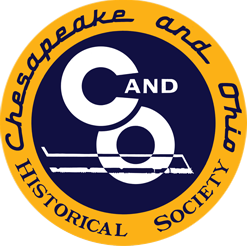

$29.95
C&O/B&O Freight Car Handling & Documentation
This booklet reprints a C&O/B&O “Yard Clerk’s Manual” from the late 1960s that was apparently intended as an introductory course on how freight traffic was handled, documented, and moved over the railway.
It shows trhe main forms used such as waybills and bills of lading, how to handle various classes of traffic, how cars are to be labeled, documented and moved. It traces the paperwork necessary to move freight by car-load lot from shipper to consignee, and how the paperwork follows the car as it moves from division to division or to interchange. SpeCialty cars and loads such as livestock, high and wide, perishable, and dangerous materials are treated, as well as information on the blocking of coal for the Great Lakes ports or for Tidewater. Since this is the C&O/B&O era, forms for both railroads are shown as well as division
maps for both lines.
This is after the end of Less-Than-Carload freight days, but otherwise the procedures in effect in this manual are about the same as they were in the 19508, perhaps only with a little more computerized automation (C&O received its much touted UNIVAC computer in the mid-1950s).
The manual can be used especially by the modeler to help in devising prototype operations, and is written in a basic format which is easy to understood. The general railroad historian will also find it a valuable resource for understanding how the railway operated its freight service. The glossary of terms is alsoa good reference.
C&O/B&O Freight Car Handling & Documentation
This booklet reprints a C&O/B&O “Yard Clerk’s Manual” from the late 1960s that was apparently intended as an introductory course on how freight traffic was handled, documented, and moved over the railway.
It shows trhe main forms used such as waybills and bills of lading, how to handle various classes of traffic, how cars are to be labeled, documented and moved. It traces the paperwork necessary to move freight by car-load lot from shipper to consignee, and how the paperwork follows the car as it moves from division to division or to interchange. SpeCialty cars and loads such as livestock, high and wide, perishable, and dangerous materials are treated, as well as information on the blocking of coal for the Great Lakes ports or for Tidewater. Since this is the C&O/B&O era, forms for both railroads are shown as well as division
maps for both lines.
This is after the end of Less-Than-Carload freight days, but otherwise the procedures in effect in this manual are about the same as they were in the 19508, perhaps only with a little more computerized automation (C&O received its much touted UNIVAC computer in the mid-1950s).
The manual can be used especially by the modeler to help in devising prototype operations, and is written in a basic format which is easy to understood. The general railroad historian will also find it a valuable resource for understanding how the railway operated its freight service. The glossary of terms is alsoa good reference.
| Media type | Printed, CD |
|---|
| Availability |
Now available in-store at 312 E. Ridgeway St Clifton Forge 24422 Powered With Oliver Pos |
|---|
